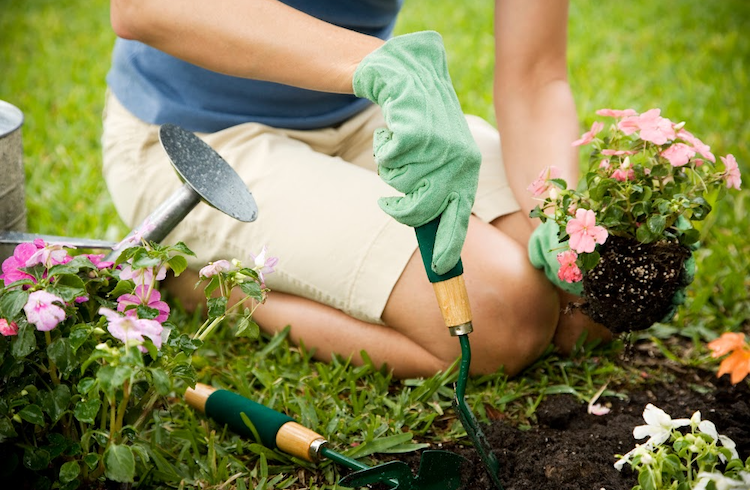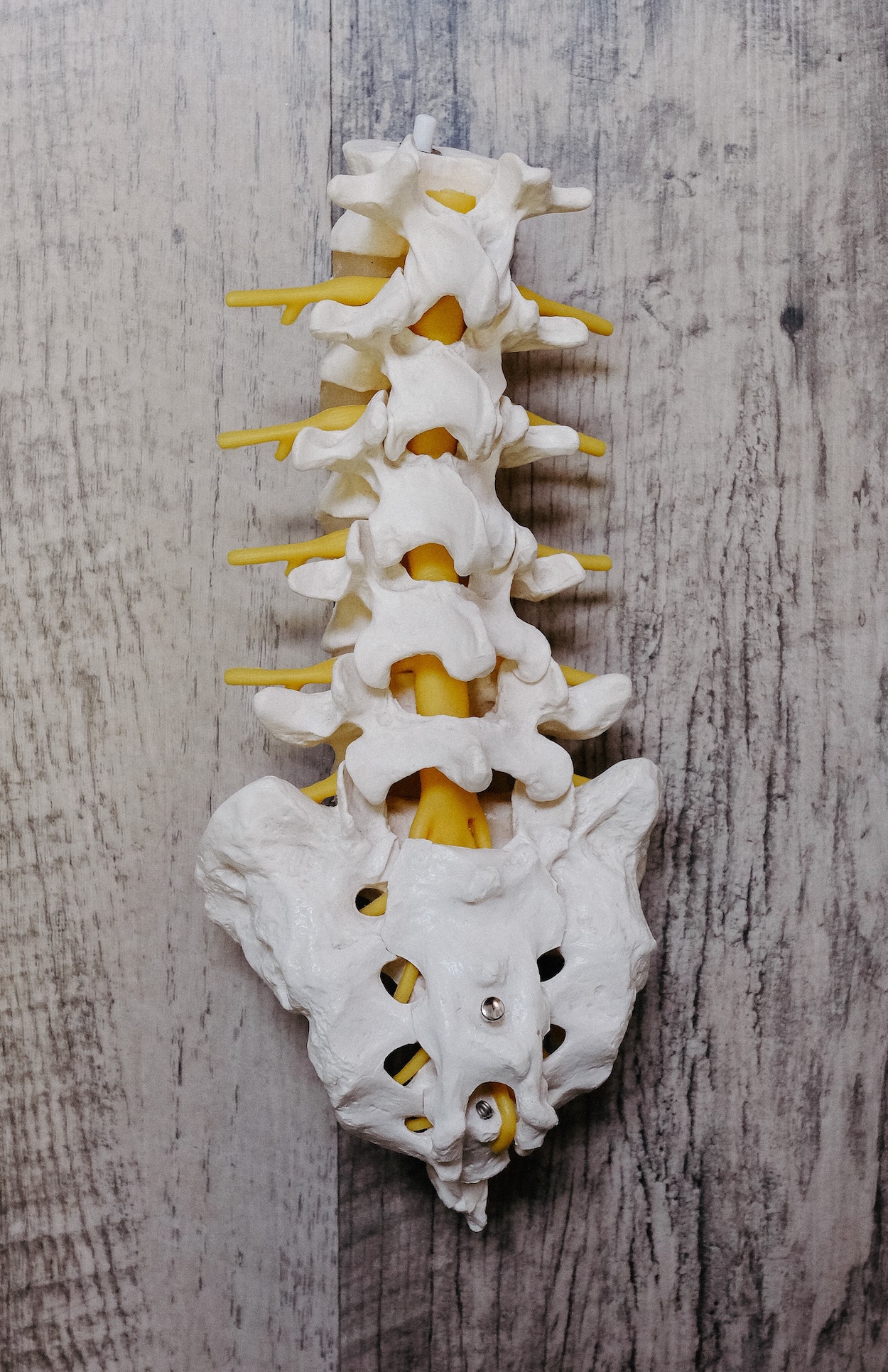
5 Ways to Enjoy Spring Cleaning
It is time to purge, open the windows and get into those hard-to-reach corners. What’s spring cleaning without moving furniture and getting right in there?
We’ve been waiting many long months to reopen our homes to the fresh air, the sounds of nature, and the ability to clear out that built-up clutter. But injuries, particularly back injuries, are prevalent during this time of year. The injuries brought on by lifting, twisting, and tripping are the ones that can have long recovery times, so how can you prevent them?
Create a To-Do List
 Patients that the desire to do it all at once can leave them scrambling to complete the many tasks they have started. Sticking to a list and completing one task at a time will allow you to remain organized and sure of your surroundings. Working in one area of the home at a time will allow you comfortably declutter and clean to completion. This makes it less likely to be tripping over cords or losing track of time.
Patients that the desire to do it all at once can leave them scrambling to complete the many tasks they have started. Sticking to a list and completing one task at a time will allow you to remain organized and sure of your surroundings. Working in one area of the home at a time will allow you comfortably declutter and clean to completion. This makes it less likely to be tripping over cords or losing track of time.
Warm-Up
You may be thinking, “warm-up to clean the house?”.
Yes, the bending, moving, lifting, and scrubbing can have you – at the very least – feeling sore the next day. But injuries are more likely to occur if you have stiff muscles. Take a walk around the house, do a few simple stretches, and get your muscles warm and blood circulating to your extremities.
Keep Your Abs Tight
Simply keeping your abs tight throughout the cleaning process will give you a great ab workout and help support your back while moving and lifting items. Many back injuries occur due to poor form when moving, lifting, or getting up out of awkward positions. However, having a solid core will help prevent these injuries by keeping your musculoskeletal system firmly in place.
Use Your Legs, Not Your Back
Instead of bending at the waist, use your legs and squat or lunge! Squat while cleaning the bottoms of windows and mirrors. When cleaning the tub or picking items up off the floor, squat and bend at the knees when reaching for objects, lunge while vacuuming or weeding the garden – both of which are great for your shoulders and arms.
Clean More Than Your Home
Spring cleaning isn’t just about the physical aspect of cleaning and purging either. Cleaning up your eating habits and routine is a great way to get back on track after the long winter months. Getting into a better sleeping routine is a sure way to have you feeling and looking better. And making movement a crucial part of your daily routine will help you keep your body agile and in shape – so you can proactively prevent injuries.
Your home is an excellent place to start, but don’t forget to include the rest of your life. Make sure you have your Chiropractic appointments scheduled into your routine and be sure to make fitness a part of this equation.
Enjoy Yourself
Enjoy yourself by putting on your favorite music or podcast. Make sure you enlist family members to help out with these tasks, so you don’t become overburdened with house/yard work. Tasks can be easily divided up and categorized per age group when involving children, especially if you can turn it into a game!
Life is better when it is decluttered, the fresh air flows, and we feel like we have accomplished something!
Get the Most From Your Walks: A Chiropractic Approach
More people are choosing to walk as a primary source of movement. Spending time outdoors has become a standard form of self-care, and smart devices with built-in pedometers have made tracking walking distance an easy way to chart progress.
Walking is a great way to maintain mobility, improve your mood and get some much-needed cardiovascular work that many of us are missing.
 The Walking/Chiropractic Connection
The Walking/Chiropractic Connection
A common misconception about walking is that there is no right or wrong way to do it. The truth is, even with walking, form and footwear matter. Yes, walking is something we take for granted; it is something many of us do mindlessly to get around. As a chiropractor, I will share that walking for many people requires some thought about posture, core stability, gait, and footwear.
Walking is a perfect way to regulate and improve your sleep, mood, how you feel about your body, and stress levels; it supports a healthy immune system and can help develop a relationship with nature!
How Can Chiropractic Help?
Chiropractic care has many benefits, but our primary focus is ensuring you are preventing pain, stiffness, and injuries. Pain relief is a close second.
Improving your mobility and flexibility will help to loosen up tight muscles because flexible muscles are less likely to result in pain or injuries. This is done when you and your chiropractor discuss your walking goals, examine your gait, and develop a plan that includes stretching and exercise to ensure your walks are as beneficial as possible. The rest is up to you. Following this plan will ensure you remain pain-free while maximizing the benefits of your walks.
Pain relief is another focus of this work, particularly if you experience poor posture or a weak core. Unfortunately, walking can affect your back and hips if your spine is out of alignment, so regular adjustments are necessary.
Walking has many benefits that affect your circulatory system and organs and releases endorphins. Setting and achieving goals also releases endorphins. Tracking steps or distance and achieving daily and weekly goals will add to the feelings of happiness and accomplishment that come with moving your body.
How Much Walking is Recommended?
This depends entirely on your level of fitness and ability. Some people walk a scheduled 30 minutes before or after work, others walk during a time-limited lunch break, while others enjoy walking in the neighborhood with the family. The general rule of thumb is that at least 30 minutes a day of walking can help reduce the development of cardiovascular disease and diabetes. If mobility is an issue, I would suggest starting at less than 30 minutes but working your way towards that goal if possible.
Otherwise, getting in a solid 60-minute walk a day can help you feel stronger and could help to melt some extra weight off. You’ll be pleased with your results if you are mindful of your posture and have well-fitted sneakers to ensure you get the most out of your walk.
Either way, any amount of movement is better than no movement. Don’t restrict yourself!
If you have any questions about your walking routine, contact us and find out what we can do to help you maximize your results!


 Winter is over, and after months of remaining indoors, your body may require some warming up to get back into being more physically active. Without preventative measures, coming out of hibernation too strongly puts you at an increased risk for sprains, strains, and other common injuries.
Winter is over, and after months of remaining indoors, your body may require some warming up to get back into being more physically active. Without preventative measures, coming out of hibernation too strongly puts you at an increased risk for sprains, strains, and other common injuries. If you have ever had an ankle injury, you know how it can affect your mobility for months and, if left untreated, for years. The trouble with ankle injuries is that they are often misdiagnosed because they can affect other areas of the body. An ankle injury commonly causes hip, knee, or lower back pain. Still, it can often be treated as an injury to the part of the anatomy experiencing the pain.
If you have ever had an ankle injury, you know how it can affect your mobility for months and, if left untreated, for years. The trouble with ankle injuries is that they are often misdiagnosed because they can affect other areas of the body. An ankle injury commonly causes hip, knee, or lower back pain. Still, it can often be treated as an injury to the part of the anatomy experiencing the pain.
 The hip flexors are the muscles that attach to the front of the hip and are responsible for bringing the knee up toward the chest. One of these muscles originates in the lower spine area and attaches to the thigh bone. The other smaller muscles stretch around the same location, wrapping from the front to the back of the hip area. When you have pain, it could be any of the muscles in the area causing it, mainly because they all work together to support the hip’s movement. If you can locate the bony part in front of your pelvis just under your belt and move your hand down a few inches, you can press and feel whether your hip flexors are causing your pain. This part of your hip will feel tender.
The hip flexors are the muscles that attach to the front of the hip and are responsible for bringing the knee up toward the chest. One of these muscles originates in the lower spine area and attaches to the thigh bone. The other smaller muscles stretch around the same location, wrapping from the front to the back of the hip area. When you have pain, it could be any of the muscles in the area causing it, mainly because they all work together to support the hip’s movement. If you can locate the bony part in front of your pelvis just under your belt and move your hand down a few inches, you can press and feel whether your hip flexors are causing your pain. This part of your hip will feel tender. Reaching out to us is an excellent addition to your existing health care team. As a disc degenerates it becomes supplied with more nerves. And well, with more nerves, the more pain you will experience. As a chiropractor, I know how to work with these irritated nerves to naturally help to reduce the amount of pain you are experiencing.
Reaching out to us is an excellent addition to your existing health care team. As a disc degenerates it becomes supplied with more nerves. And well, with more nerves, the more pain you will experience. As a chiropractor, I know how to work with these irritated nerves to naturally help to reduce the amount of pain you are experiencing.
 Here’s what you can to to celebrate the #1 person who deserves it: you!
Here’s what you can to to celebrate the #1 person who deserves it: you! The good news is, there is much you can do to prevent yourself from becoming sidelined all winter long. By preparing and knowing what you can do, you minimize your risks of being hurt and injured.
The good news is, there is much you can do to prevent yourself from becoming sidelined all winter long. By preparing and knowing what you can do, you minimize your risks of being hurt and injured.
 Most of us consider aging and think about slowing down. That we won’t be able to move around as well, or enjoy the activities we love as more candles gather on each birthday cake. Some may have already experienced that their activities of daily living have been influenced by issues commonly associated with the aging process, such as a lack of mobility and flexibility.
Most of us consider aging and think about slowing down. That we won’t be able to move around as well, or enjoy the activities we love as more candles gather on each birthday cake. Some may have already experienced that their activities of daily living have been influenced by issues commonly associated with the aging process, such as a lack of mobility and flexibility. Happy 2023! When you think of the new year, what comes to mind? Is it celebrating with friends and family? Looking back on the last year over all you’ve encountered and accomplished? Or is your focus more on what you’d like to achieve in the upcoming year? While both are worth considering, there is a lot of negativity associated with a traditional part of New Year’s Eve: making resolutions.
Happy 2023! When you think of the new year, what comes to mind? Is it celebrating with friends and family? Looking back on the last year over all you’ve encountered and accomplished? Or is your focus more on what you’d like to achieve in the upcoming year? While both are worth considering, there is a lot of negativity associated with a traditional part of New Year’s Eve: making resolutions. 
 Stiffness, achy joints, and soreness increase in the cold weather. The combination of stiff muscles due to extreme temperatures, changes in barometric pressure and flu season can cause your joints to become inflamed and more painful than usual. The fluid that helps our joints remain lubricated can be affected by cold temperatures, which is why Chiropractic can become the most valuable player in your healthcare team over the winter months. The work we do will help loosen up the fluid in your joints so it can flow more freely. Not only that, but reminders about how to safely keep yourself warm, along with natural ways to keep your immune system functioning optimally will all create a system for your body that will allow you to enjoy the winter months pain free.
Stiffness, achy joints, and soreness increase in the cold weather. The combination of stiff muscles due to extreme temperatures, changes in barometric pressure and flu season can cause your joints to become inflamed and more painful than usual. The fluid that helps our joints remain lubricated can be affected by cold temperatures, which is why Chiropractic can become the most valuable player in your healthcare team over the winter months. The work we do will help loosen up the fluid in your joints so it can flow more freely. Not only that, but reminders about how to safely keep yourself warm, along with natural ways to keep your immune system functioning optimally will all create a system for your body that will allow you to enjoy the winter months pain free.  For the most part, acute cases are often the result of recent injuries. Still, long-lasting muscle tension can be caused by repetitive activities like sports, unusual sleep positions, lack of sleep, emotional stress, unhealed past injuries, and working at a desk. We all know how being too sedentary can have very poor physical outcomes.
For the most part, acute cases are often the result of recent injuries. Still, long-lasting muscle tension can be caused by repetitive activities like sports, unusual sleep positions, lack of sleep, emotional stress, unhealed past injuries, and working at a desk. We all know how being too sedentary can have very poor physical outcomes. We always start with a consultation, and if you’re an existing patient, then we want to know what your concerns are or what activities you will be engaged in. Yard work or gardening may not seem like an enormous physical undertaking. Still, even the smallest garden requires repetitive movement you may not be accustomed to. Your chiropractor will assess what your warm-up should consist of, along with plans on how to bend, lift and twist. The goal will always be to provide prevention and relief for stiffness and pain without medication.
We always start with a consultation, and if you’re an existing patient, then we want to know what your concerns are or what activities you will be engaged in. Yard work or gardening may not seem like an enormous physical undertaking. Still, even the smallest garden requires repetitive movement you may not be accustomed to. Your chiropractor will assess what your warm-up should consist of, along with plans on how to bend, lift and twist. The goal will always be to provide prevention and relief for stiffness and pain without medication.
 The hip is stable, but since it bears the weight of the body, it’s likely to develop problems from the pressure. This is indicated by symptoms such as pain in and around the hip, including the groin, and referred pain into the thigh and knee. Limping, stiffness and an inability to bear weight on one side of the body may also indicate a hip problem.
The hip is stable, but since it bears the weight of the body, it’s likely to develop problems from the pressure. This is indicated by symptoms such as pain in and around the hip, including the groin, and referred pain into the thigh and knee. Limping, stiffness and an inability to bear weight on one side of the body may also indicate a hip problem.  As with anything else in life, practice makes perfect when it comes to breathing. To learn how to breathe and get the many benefits of proper breathing, you can use some easy, simple exercises.
As with anything else in life, practice makes perfect when it comes to breathing. To learn how to breathe and get the many benefits of proper breathing, you can use some easy, simple exercises. 
 Why Pain Sets In
Why Pain Sets In  What is The Solution?
What is The Solution?
 For many of us, gardening is a necessary and cathartic part of our summer routine. Walking, hiking, enjoying new hobbies, and gardening remain the number one way people have remained limber over the last few years. Thankfully, these are all fantastic ways to maintain our mental wellness.
For many of us, gardening is a necessary and cathartic part of our summer routine. Walking, hiking, enjoying new hobbies, and gardening remain the number one way people have remained limber over the last few years. Thankfully, these are all fantastic ways to maintain our mental wellness.